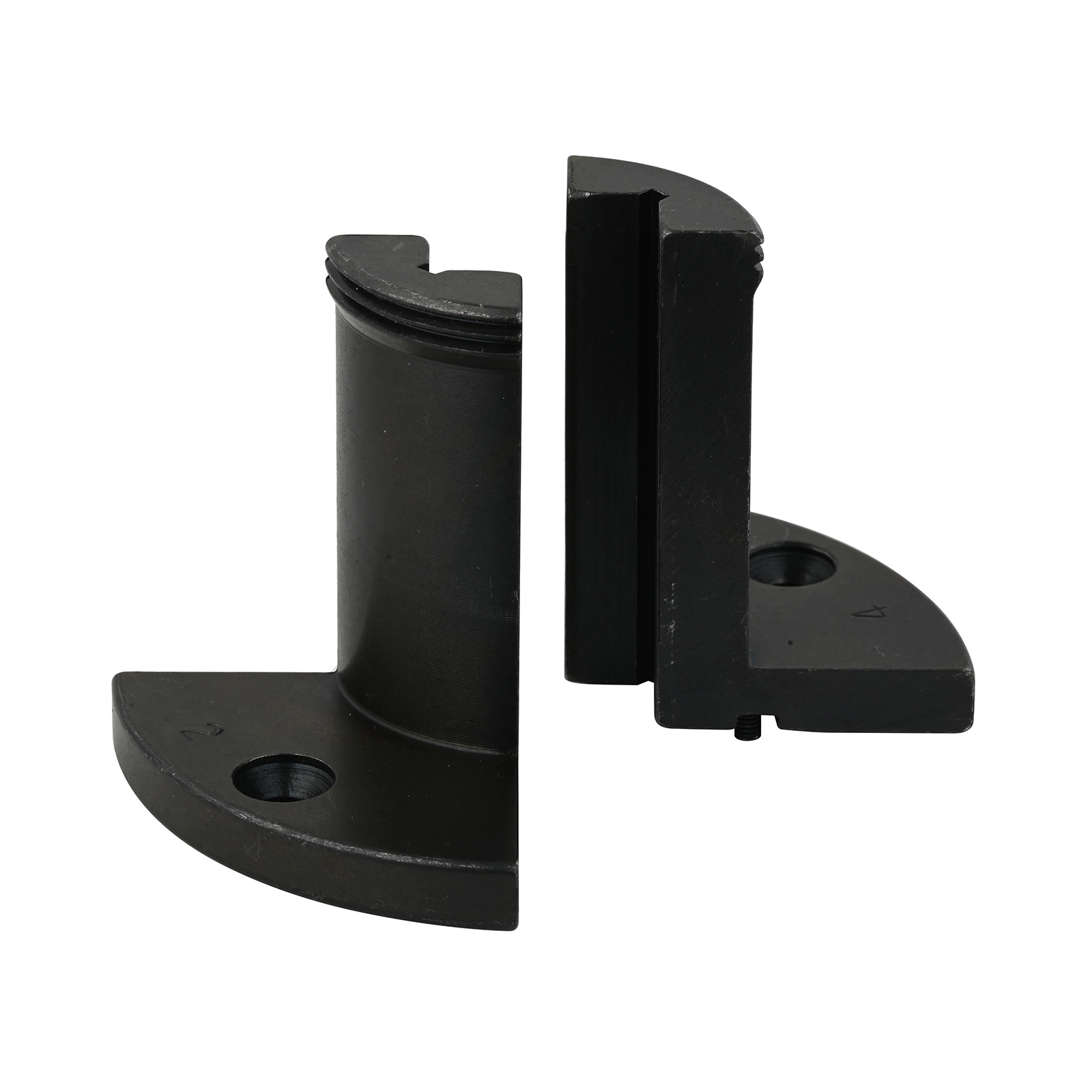In order to drill on your lathe, you are going to need two accessories - a jacobs chuck that fits into the tailstock and that holds drill bits, and (probably) a scroll chuck that fits into the headstock to hold the workpiece that you are drilling. That is, the blank is rotating, while a stationary bit cuts the hole. But it is important that you purchase the correct size accessories to fit onto your lathe. I say 'probably' because there are actually several options for holding the blank, with a jacobs chuck being the most popular.
Let me caution you that you can't always believe the published information about these low-end Chinese-made lathes. The instruction book that came with my first lathe (very similar to yours) contained totally incorrect information about the size accessories required for the machine. So it would be prudent to make a few measurements to confirm that the specifications are correct before you spend money on accessories. The specification for your lathe, page 8, states that the headstock is an MT-2. Normally, it's safe to assume that the headstock and tailstock are machined to receive the same taper, but there is at least one popular lathe where this isn't the case, so a quick check is in order.
Let me suggest that you make some simple measurements on your lathe to see if you can believe the published information. You want to measure the outside diameter and thread pitch of the headstock spindle, the inside diameter of the opening in the end of that spindle, and the inside diameter of the throat of the tailstock ram. If the lathe is in fact an MT-2, then the headstock spindle probably has a 1" OD, and an 8 per inch thread pitch. You don't need to be extremely precise in the measurements since the most likely alternative would be a 3/4" OD, and a 16 per inch thread pitch.
Secondly, you need to make sure that headstock spindle and tailstock ram are both machined to receive an MT-2 fitting. Again, the most likely alternative would be an MT-1 opening. The ID of the opening for an MT-2 fitting should be 0.7 inches while an MT-1 opening would be 0.475 inches, so again the measurement doesn't have to be extremely precise.
If your lathe actually is designed to use MT-2 accessories, then the jacobs (drill) chuck you have selected should be fine. It's a 1/2" chuck rather than a 3/8" chuck; you might be able to find a less expensive 3/8" chuck, but over time you may come to appreciate the added flexibility of being able to grip a larger drill shank. It's a keyed chuck, which means that it can actually get a tighter grip on drill bits than a keyless chuck. The only downside of a keyed chuck compared with a keyless is that if you inadvertently leave the key in the chuck while drilling, and if the chuck starts to spin, it could throw the key at you (dangerous) or into the pile of shavings under the lathe (a nuisance). I personally prefer a keyed chuck.
However, I have concerns about the three-jaw minichuck you selected. First, it mounts via an MT1 taper, and if your lathe is actually MT-2, it won't fit. Also, that's a really small chuck, and I think you will quickly find that the capabilities of that chuck limit the range of things you will be able do. And frankly, that chuck doesn't have very good reviewer ratings. I suggest that you look instead at a four-jaw chuck that screws onto the headstock spindle rather than mounts using a morse taper. That will be a more hefty chuck (and it will be more expensive), but in the long run it will give you a lot more flexibility for taking on a variety of projects. The chuck you identified uses 'tommy bars' to tighten - that's a perfectly fine arrangement although there are more convenient options (on more expensive chucks).
One final point - I assume that you are making pens. In that case, there are two requirements for the hole:
1. To facilitate glueing the tube into the blank, the hole must be straight and have a fairly consistent diameter. What that means is that the drill bit must rotate about an axis that is coincident with the center of the bit. In other words, the bit must be mounted squarely in the drill chuck such that it doesn't 'wobble' as you are drilling. It's usually easier to mount a bit correctly in a jacobs chuck for a lathe because you can remove the chuck, and look at the end of the bit to make sure that it is straight in the chuck jaws. With a drill press, you have to test the drill to make sure it's not wobbling before you start drilling.
2. The hole would normally be centered on one end of the blank, but it doesn't have to be exactly centered at the other end. Instead, the only requirement is that there be enough 'meat' around the hole to allow you to turn the body without cutting into the hole. It's perfectly OK for the hole to be angled a bit in the blank as long as it comes out the other end with enough material to be able to turn the blank around the hole. Again, this is easier to do on a lathe because you can grip the blank in jaws. When drilling on a drill press, you have to worry about whether you are holding the blank in a perfectly plumb alignment with the axis of the drill press.
 www.harborfreight.com
www.harborfreight.com
 www.harborfreight.com
www.harborfreight.com


